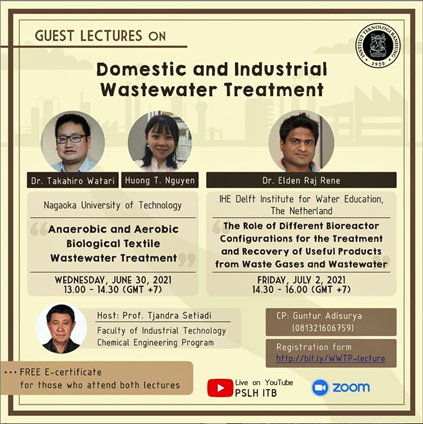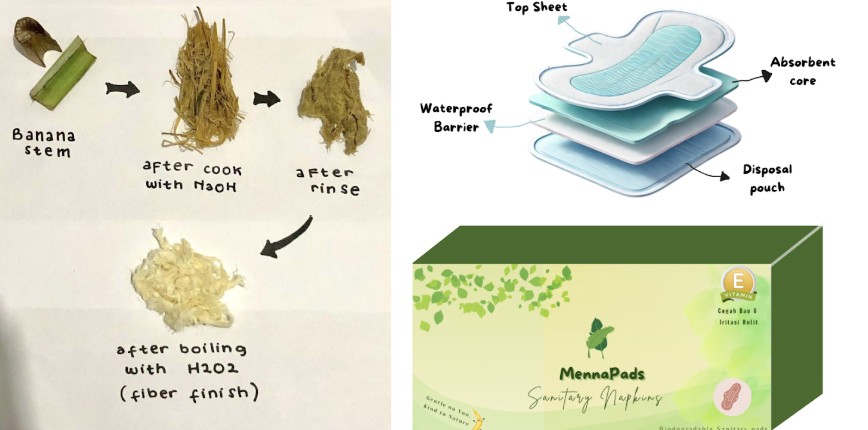FIT ITB Webinar Discusses Waste Recovery Solutions with Bioreactors
By Adi Permana
Editor Adi Permana

BANDUNG, itb.ac.id – The need for food and water has increased rapidly along with the increase of human population. However, their availability often cannot keep up with the ever-increasing demand.
This could cause various problems such as hunger, drought, and conflict over a productive area. Natural recycling cycles such as the water cycle and the decay cycle are often insufficient to provide a substitute for used resources.
All of these things were discussed in a general lecture at the Faculty of Industrial Technology (FIT) ITB with the theme "The Role of Different Bioreactor Configurations for the Treatment and Recovery of Useful Products from Waste Gases and Wastewater" on Friday (2/7/2021) online.
This lecture presented a speaker from Delft University of Technology, Dr. Elden Raj Rene. He is one of researchers at the IHE Delft Institute for Water Education, a global education institute formed to address water problems in developing countries. The public lecture was led by Prof. Tjandra Setiadi from Chemical Engineering ITB and also talked about the application of several types of bioreactors in resource recovery.
"Bioreactors could help handle pollutant problems by carrying out bioprocesses such as absorption, degradation, and biomineralization and then turning them into more useful materials," said Dr. Elden. He added that bioreactors will have an important role in wastewater treatment and resource recovery in the future.
Bioprocess in H2S Removal from Biogas.
Dr. Elden then gave an example of the bioreactor application in the removal of hydrogen sulfide (H2S) in an anoxic state in biogas. Hydrogen sulfide is a gas that is toxic to humans and could cause rust in pipes. The transfer of hydrogen sulfide by conventional method so far has been very costly and produces toxic chemical waste.
"We use the sulfur oxidation process in an autotrophic denitrification state with the help of thiobacillus denitrificans bacteria," explained Dr. Elden. This process is called Nitrate Reducing Sulfide-Oxidizing Bacteria (NR-SOB). According to him, nitrate compounds will act as electron donors while sulfur compounds will act as electron acceptors. From this process, sulfur gas and sulfate compounds will be obtained which can be used for industrial purposes.
The bioprocess can also be used to clean up hydrogen sulfide and nitrate at the same time from wastewater. This process involves facultative autotrophic bacteria called paracoccus strains. The bioreactor system which is arranged in the form of a water tube will make wastewater flow through several compartments. Then the wastewater will react with special compounds and be decomposed by bacterial strains in a predetermined compartment.
Dr. Elden believes that there is still a lot of potential for bioreactors and bioprocesses that have not been utilized optimally. Bioprocesses that involve various microorganisms have many advantages compared to the conventional methods that we have used so far.
Reporter: Favian Aldilla (Teknik Sipil, 2019)
Translator: Aghisna Syifa Rahmani (TPB SITHS 2020)

.jpg)
.jpg)
.png)
.jpg)
.jpg)

